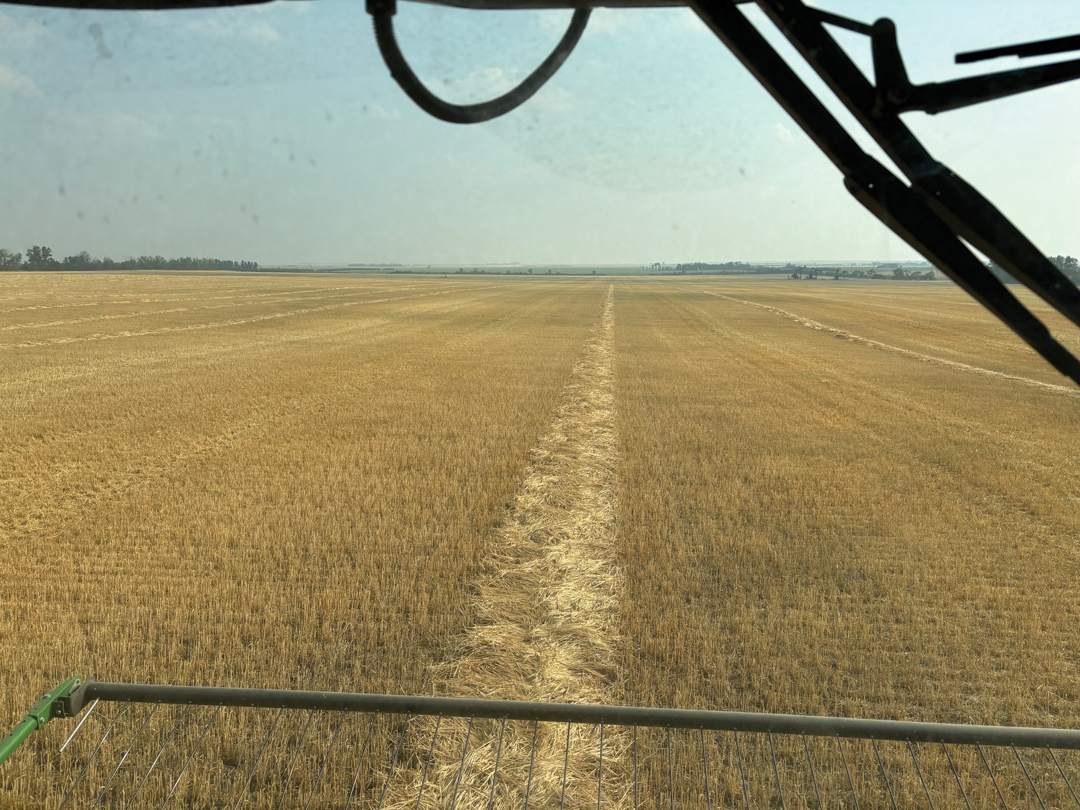UNDERWEIGHT OPPORTUNITIES
BY TIM PARENT • PHOTO COURTESY OF TARA SAWYER
Gabriel Ribeiro is frequently asked about low bushel-weight barley. It has become a topic of interest and concern among ranchers and feedlot operators, particularly in Western Canada, said the assistant professor in the University of Saskatchewan Animal and Poultry Science Department. He is also chair of the Saskatchewan Beef Industry Conference.
Low bushel-weight barley is less dense than it should be. This can be caused when hot, dry weather occurs as the seed heads fill. This past summer, such conditions occurred across the Prairies in July and August during this critical growth stage. Reports of underweight barley have been widespread, and the extent of its impact is not yet clear.
Because it is a staple feed grain for the beef industry and a key energy source for cattle, farmers are concerned. “We need to focus on what does that change in the quality of that grain,” said Ribeiro. “We’re talking about grain that usually has much lower starch content and greater fibre content, and sometimes it’s associated with higher protein content.”
These changes in grain composition directly affect its value. Reduced-starch barley does not perform as well as unaffected feed barley. Naturally, ranchers don’t want to pay the same price for a lesser-performing grain. “Valuing and estimating how much energy you can get from that low, partial-weight barley becomes quite important,” said Ribeiro. He added that feeding strategies must be adjusted to accommodate this lower energy content to ensure livestock growth performance is not compromised. “If we account for that and adjust, then we can still have animals performing quite well.”
Livestock nutritionist Barry Yaremcio echoed Ribeiro. He cited research conducted at the University of Alberta that found no difference in animal performance when feeding barley with bushel weights that ranged from 42 to 54 pounds. However, bushel weight lower than 42 caused a decline in feed efficiency and drop in average daily gain of one per cent for every pound under that low-end threshold.
Adjustments in feed processing are necessary to maximize the value of low bushel-weight barley, he emphasized. “The biggest thing is readjusting the roller mill or adjusting the hammer mill when processing this grain,” he said. “With the smaller kernel size, the rolls are going to need to be adjusted tighter so they still get a crack in the kernel.”
Improper processing can leave kernels whole, and these may pass through the animal undigested. Mixing barley of varied weight can further complicate processing, said Yaremcio. “If you set it for the 42-pound barley, then you’re going to get an over-processing of the heavy barley, leading to more risks for bloat, acidosis and grain overload.”
Despite these challenges, there are opportunities for those willing to adapt. Yaremcio points out lighter-weight barley is often significantly discounted. This creates cost-savings between 20 and 40 per cent compared to heavy barley, an opportunity if it can be effectively managed. “Some of the areas hardest hit with drought and lack of moisture are going to have a lot of lightweight barley available for sale that may be the grain elevators or feedlots don’t want to take. So, there’s an opportunity to save money on the cost of feed per head per day.”
Ultimately, managing low bushel-weight barley requires careful consideration and adaptation, said Ribeiro. “There’s an opportunity to make money or capitalize on low bushel-weight barley, but that comes with more management challenges for processing. It requires staying more on top of that processing.”







Comments